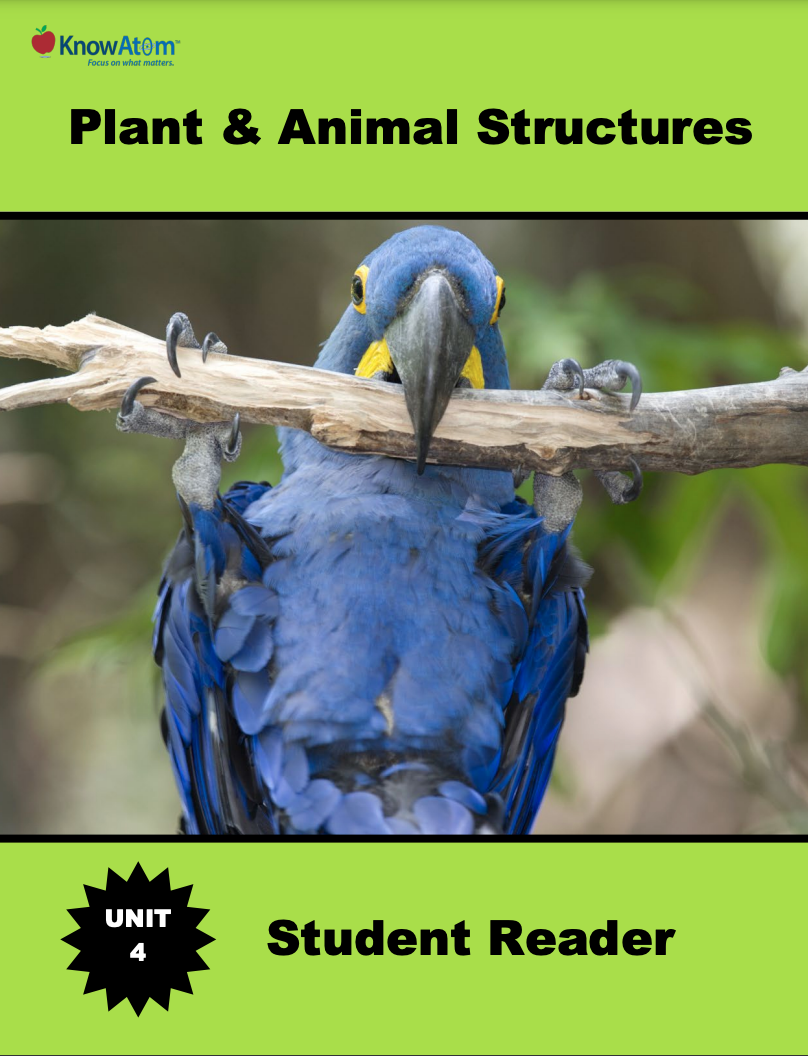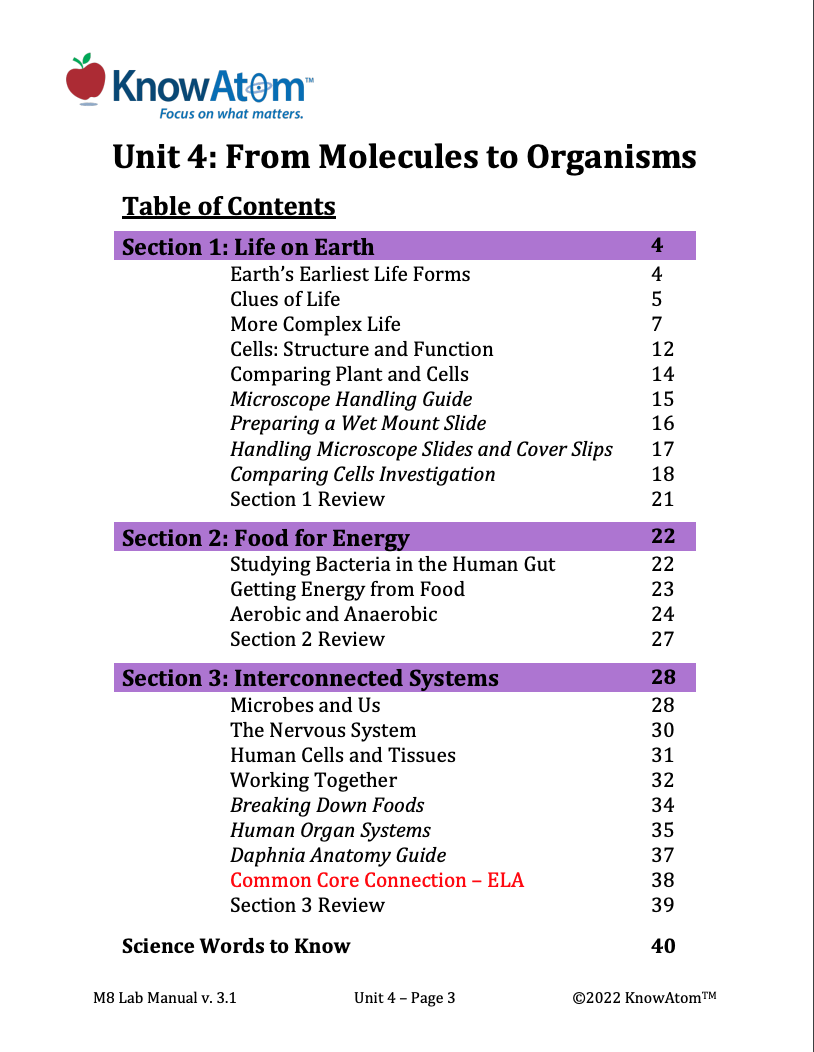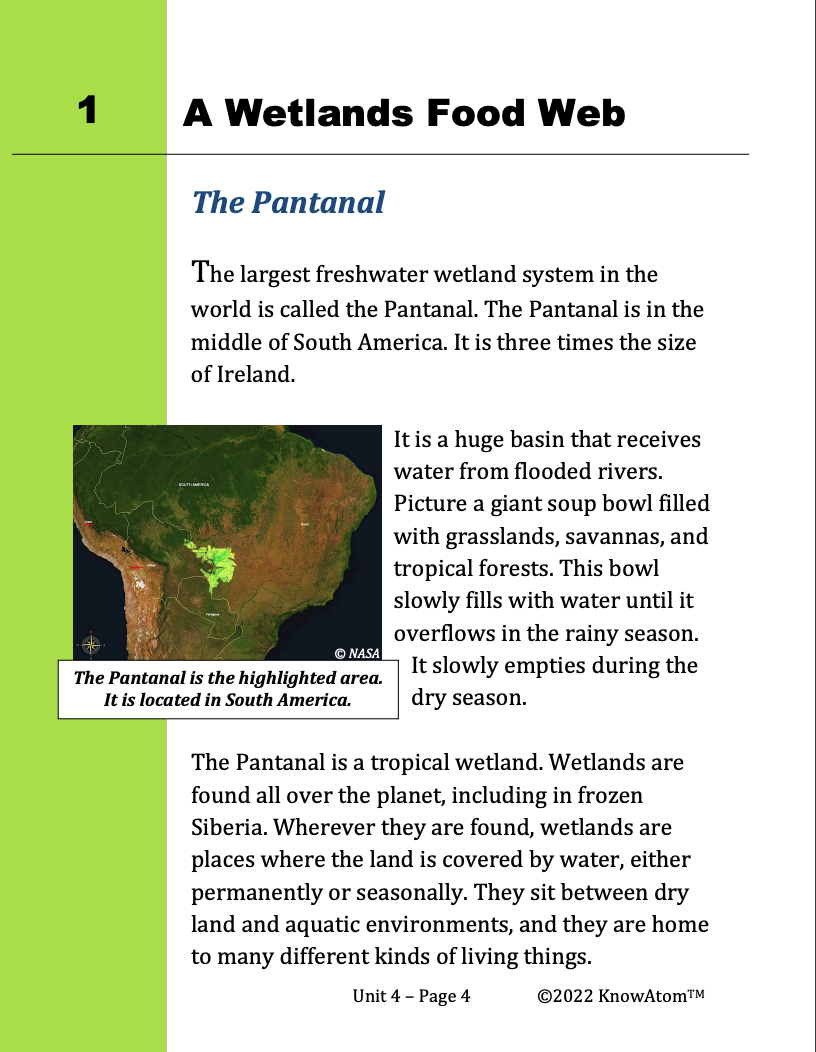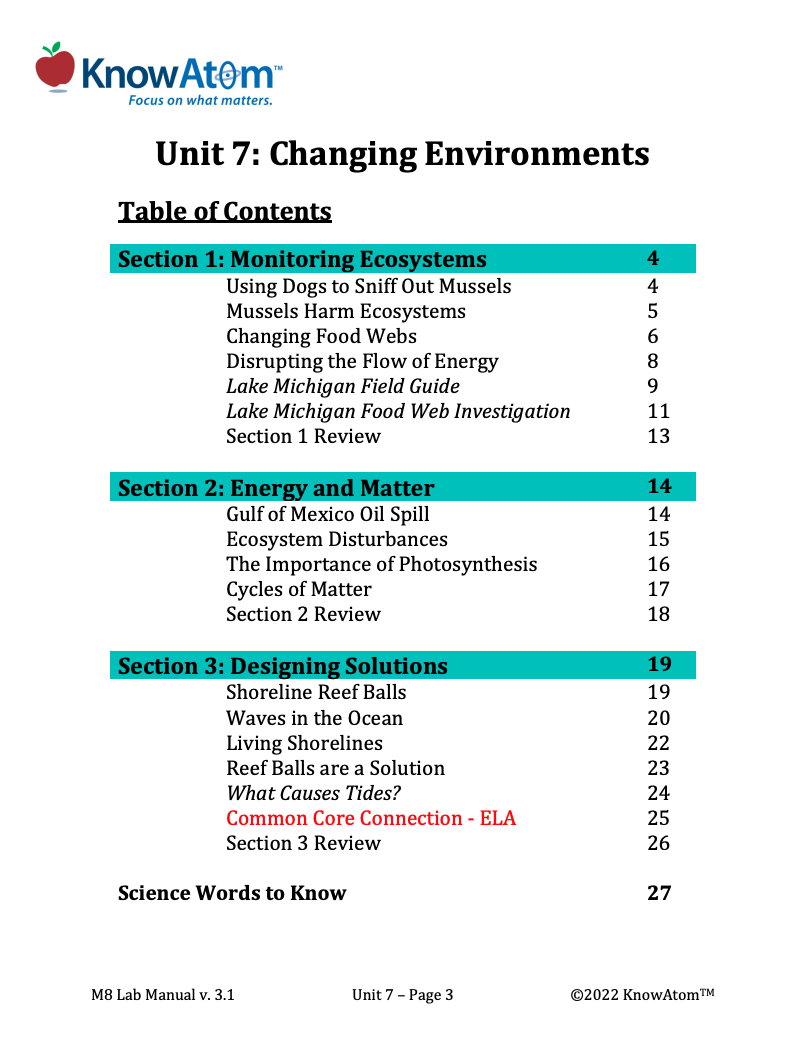
In this unit, students focus on the biosphere and how living things depend on their environment and one another for survival. In this first lesson of the unit, they explore the science phenomena of the flow of energy through a food web. This page outlines key parts of the lesson.
.png)
In this unit, students explore science phenomena of the life forms that live on Earth, analyzing the cellular structures that make up complex organisms and figuring out how different groups of cells work together to keep the organism functioning properly. This page shows extracts from each part of this lesson.

In this unit, students compare the science phenomena of bacterial, plant, and animal cells, figuring out similarities among them all as well as differences. Students then conduct an experiment into how yeast cells extract energy from food molecules. This page highlights components of this lesson.

In this unit, students analyze how living things have specific structures that allow them to function in different environments. They trace how energy flows through a tropical wetland food web, and then test how temperature affects a plant’s ability to transpire through its leaves, affecting its ability to grow. This page is a high-level extract of this lesson on plant structures.

In this unit, students are introduced to the dynamic nature of ecosystems and how disturbances affect them. In this lesson, students observe the effects of an oil spill on the ability of plants to photosynthesize, which can harm an entire ecosystem. This page is a high-level extract of this lesson.
.png)
In this unit, students explore the organisms that live on Earth’s surface, analyzing how living things are made of cells, which have certain requirements for survival, including food, water, and energy. In this lesson, students figure out the phenomena of energy transfer in living systems with a focus on how energy and matter flow through organisms. This page showcases excerpts from components of this lesson.
.png)
In this unit, students explore the phenomena of rocky shore ecosystems, studying the interactions between living things and the environment. In this lesson they focus on the science phenomena of how organisms interact with one another in an ecosystem. This page showcases key elements from this lesson.

In the second unit of Kindergarten, students explore life on Earth. They begin by exploring what makes something a living thing, and then investigate what plants and animals need to survive. To begin their study of life science, students make observations and construct explanations about those observations to explore the characteristics that all living things have in common.

In Unit 2 of Kindergarten, students explore characteristics of living things and investigate what plants and animals need to survive. They will also discover plant and animal life cycles, and learn about habitats. This page is a high-level extract from lesson two, where students use patterns of shared characteristics to help them sort photos of different things into groups according to whether they are living, once-living, or nonliving.

In this Life Science unit, Kindergartners explore plants and what they need to live and grow. This page is a high-level extract of lesson four in which students make models of adult sunflower plants to explore how plants have different parts that help them get what they need to grow.

In the second unit of Kindergarten, students explore living things and discover what plants and animals need to survive. This page provides a snapshot of lesson five which has students conducting a class experiment with bean plants to observe what they need to live and grow.

In this unit, students are introduced to living things on Earth. They begin by exploring the differences between living and nonliving things and then investigate what plants and animals need to survive by watching bean plants grow and observing a cricket in its habitat. They then create a model to show how living things depend on other living things and their environment to survive, and can change their environment to help them get what they need.
Standards citation: NGSS Lead States. 2013. Next Generation Science Standards: For States, By States. Washington, DC: The National Academies Press. Neither WestEd nor the lead states and partners that developed the Next Generation Science Standards were involved in the production of this product, and do not endorse it.
